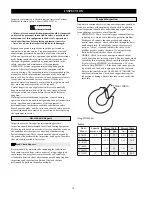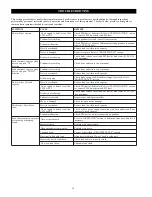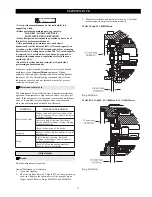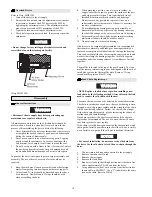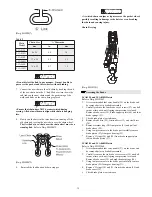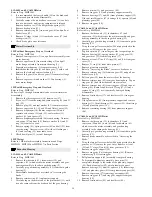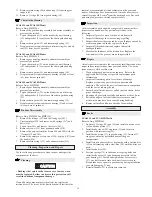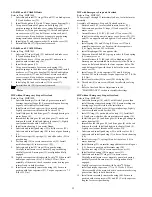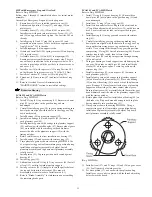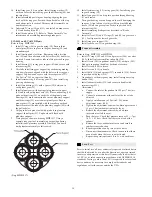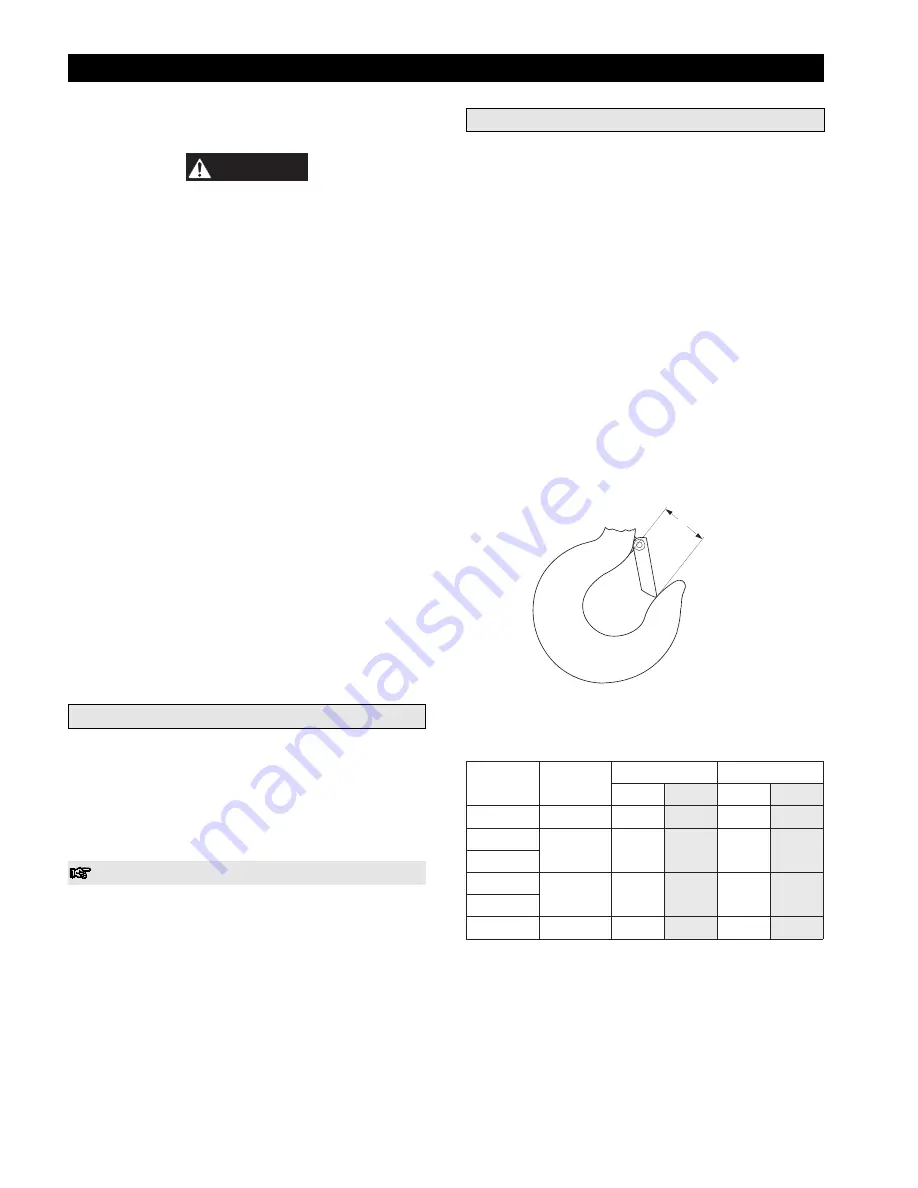
10
INSPECTION
Inspection information is based in part on American National
Standards Institute Safety Codes (ASME B30.16).
WARNING
• All new, altered or modified equipment should be inspected
and tested by personnel instructed in safety, operation and
maintenance of this equipment to ensure safe operation at
rated specifications before placing equipment in service.
• Never use a hoist that inspection indicates is damaged.
Frequent and periodic inspections should be performed on
equipment in regular service. Frequent inspections are visual
examinations performed by operators or personnel trained in
safety and operation of this equipment and include observations
made during routine hoist operation. Periodic inspections are
thorough inspections conducted by personnel trained in the
safety, operation and maintenance of this equipment.
ASME B30.16 states inspection intervals depend upon the
nature of the critical components of the equipment and the
severity of usage. The inspection intervals recommended in this
manual are based on intermittent operation of the hoist eight
hours each day, five days per week, in an environment relatively
free of dust, moisture and corrosive fumes. If the hoist is
operated almost continuously or more than the eight hours each
day, more frequent inspections will be required.
Careful inspection on a regular basis will reveal potentially
dangerous conditions while still in the early stages, allowing
corrective action to be taken before the condition becomes
dangerous.
Deficiencies revealed through inspection, or noted during
operation, must be reported to designated personnel instructed in
safety, operation and maintenance of this equipment. A
determination as to whether a condition constitutes a safety
hazard must be made, and the correction of noted safety hazards
accomplished and documented by written report before placing
the equipment in service.
Records and Reports
Inspection records, listing all points requiring periodic
inspection should be maintained for all load bearing equipment.
Written reports, based on severity of service, should be made on
the condition of critical parts as a method of documenting
Periodic Inspections. These reports should be dated, signed by
the person who performed the inspection, and kept on file where
they are readily available for review.
Load Chain Reports
Records should be maintained documenting the condition of
load chain removed from service as part of a long-range load
chain inspection program. Accurate records will establish a
relationship between visual observations noted during frequent
inspections and the actual condition of the load chain as
determined by periodic inspection methods.
Frequent Inspection
On hoists in continuous service, frequent inspections should be
made by operators at the beginning of each shift. In addition,
visual inspections should be conducted during regular service
for any damage or evidence of malfunction.
1.
OPERATION. Check for visual signs or abnormal noises
(grinding, etc.) which could indicate a potential problem.
Make sure all controls function properly and return to
neutral when released. Check chain feed through the hoist
and bottom block. If chain binds, jumps, is excessively
noisy or "clicks," clean and lubricate the chain. If the
problem persists, replace the chain. Do not operate the
hoist until all problems have been corrected.
2.
HOOKS. Check for wear or damage, increased throat
width, bent shank or twisting of hook. Replace hooks which
exceed the throat opening discard width specified in Table
4 (refer to Dwg. MHP0040) or which exceed a 10° twist
(refer to Dwg. MHP0111). If the hook latch snaps past the
tip of the hook, the hook is sprung and must be replaced.
Refer to the latest edition of ASME B30.10 "HOOKS" for
additional information. Check hook support bearings for
lubrication or damage. Ensure that they swivel easily and
smoothly.
Throat Width
(Dwg. MHP0040)
4
e
l
b
a
T
t
s
i
o
H
l
e
d
o
M
y
t
i
c
a
p
a
C
s
n
o
t
c
i
r
t
e
m
h
t
d
i
W
t
a
o
r
h
T
h
t
d
i
W
d
r
a
c
s
i
D
.
n
i
m
m
.
n
i
m
m
S
5
1
0
A
C
L
5
.
1
6
0
.
1
7
2
2
2
.
1
1
3
S
0
3
0
A
C
L
3
6
2
.
1
2
3
5
4
.
1
8
.
6
3
D
0
3
0
A
C
L
S
0
6
0
A
C
L
6
1
6
.
1
0
4
1
8
.
1
6
4
D
0
6
0
A
C
L
D
0
2
1
A
C
L
2
1
4
2
.
2
7
5
8
5
.
2
5
.
5
6
Summary of Contents for LCA015
Page 26: ...25 SERVICE NOTES ...
Page 27: ...26 SERVICE NOTES ...
Page 31: ...30 LCA030S AND LCA060D HOIST ASSEMBLY PARTS DRAWING 3 and 6 ton Hoist Capacities Dwg MHP1464 ...
Page 33: ...32 LCA060S AND LCA120D HOIST ASSEMBLY PARTS DRAWING 6 and 12 ton Hoist Capacities Dwg MHP1465 ...
Page 50: ...49 SERVICE NOTES ...











